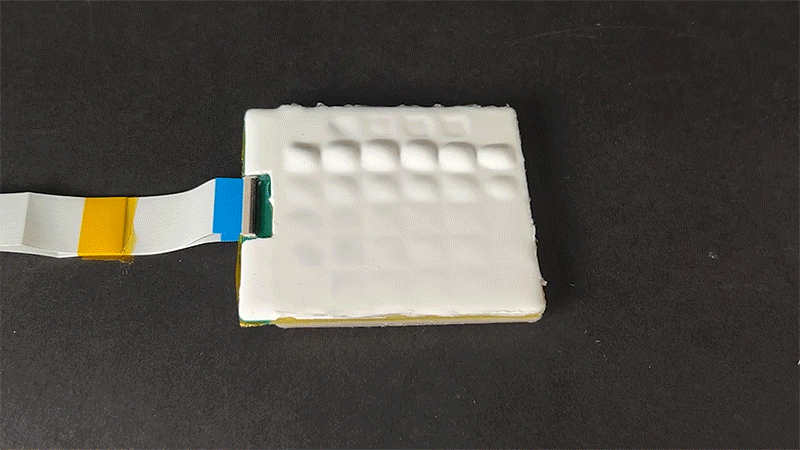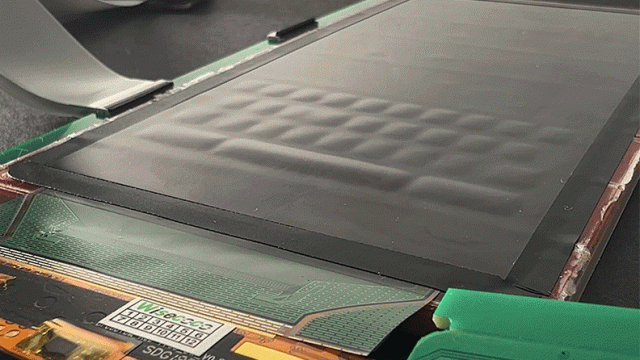The literal flexibility of OLED screen technology has allowed us to create everything from tablets that fold in half, to TVs that disappear into furniture. But researchers from Carnegie Mellon University are leveraging the flexibility of OLED panels in another way, and have created touchscreen devices your fingers can actually feel.
Versatility is what led smartphones to abandon tiny built-in keyboards for all touchscreen interfaces, as apps can take better advantage of screen real estate with tappable buttons and keyboards that are only temporarily on screen as needed. But as distracted drivers with touchscreen-only dashboards will tell you, physical buttons can still be a good thing as they provide tactile feedback to fingers — making them easy to find without looking.
Realistic vibrations, such as those generated by Apple’s Taptic engine, might make on-screen buttons feel real after you’ve pressed them, but that doesn’t solve the problem of your fingers being able to find those virtual buttons through touch alone. It’s why even touchscreen laptops still come with full QWERTY keyboards. Something as simple as typing can still be done much faster when relying on our sense of touch.
Researchers from Carnegie Mellon University’s Future Interfaces Group (FIG) are taking another shot at solving these issues with a technology they’re calling Flat Panel Haptics, as detailed in a new paper submitted to the ACM CHI Conference on Human Factors in Computing Systems which is currently taking place in Hamburg, Germany.
Over the years we’ve seen other researchers attempt to create something like this before where bumps coinciding with on-screen buttons temporarily form on touchscreen panels providing tactile feedback to fingers, but the hardware has always been bulky making real-world applications a challenge on devices that are already made as thin as can be to satisfy consumer demands for pocketability.

The FIG researchers have succeeded in creating embedded electroosmotic pumps (EEOPs) — capable of moving liquids by applying electrical fields instead of using moving parts — that measure just 1.5 millimetres thick. They can be paired with an equally thin liquid reservoir beneath them, and a flexible surface structure on top, to almost instantaneously create pop-up buttons (the process takes about a second) measuring almost five millimetres in height with enough pressure and rigidity to make them feel solid when pressed.
OLED panels aren’t quite flexible enough to allow for structures that large to pop up. However, when layered atop the new embedded electroosmotic pumps, enough of a bump can still be formed to let a user’s fingers differentiate between the on-screen keyboard’s keys. There are still some limitations to the technology that may hinder adoption, including the fact that the shape and size of the pop-up buttons are pre-determined. But eventually, if they’re made as small as the actual pixels on an OLED display, any size and shape of tactile button could be generated on-demand, and gaming on a touchscreen will no longer be as frustrating as it is today.
